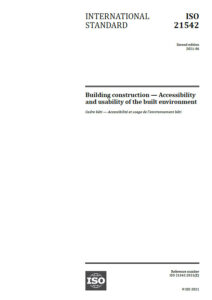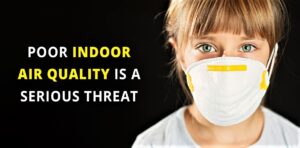2012-05-31 (2021-08-02): The Revised International Standard ISO 21542: ‘Building Construction – Accessibility & Usability of the Built Environment’ was published on 1 June 2021. Many years before, however, a decision was taken to link this Standard directly to the United Nations Convention on the Rights of Persons with Disabilities (#CRPD) … specifically now referencing Preamble Paragraph (g) and Articles 9, 10, 11, 12 and 19 in its Introduction. Reading the document, this linkage looks and feels very naturally like an unbreakable umbilical cord !
.

.
ISO 21542 has significantly widened the meaning of the concept #Accessibility4ALL … a normal evolutionary process … in particular, the #FireSafety4ALL Texts. I wonder, though, how many people would ever have considered Good Indoor Air Quality to be on the ‘Accessibility’ Menu ??
.

.
Much lower rates of direct fresh air ventilation … and a dramatic reduction in accidental or unintended air seepage from, or into, buildings (depending on local climate conditions) … all driven by an urgent need to conserve energy and to impose greater energy efficiencies on the energy which is actually consumed … are, once again, one of the main causes of serious health problems for ALL #BuildingUsers …
Building Related Ill-Health: Any adverse impact on the health of building users – while living, working, generally occupying or visiting a specific building – caused by the planning, design, construction, management, operation or maintenance of that building.
I say “once again” because, in Europe, we have been here before … after the two big oil crises of the 1970’s.
.
Anyway … I thought that it would be useful to present a relevant extract from ISO 21542 …
B.8 – INDOOR AIR QUALITY (#IAQ)
Poor indoor air quality, an important factor in relation to Building Related Ill-Health (also known as ‘sick building syndrome’), can cause serious health impairments and severely restrict a person’s participation in everyday activities, e.g. work.
Symptoms and signs may include:
- irritation of eyes, nose and throat ;
- respiratory infections and cough ;
- voice hoarseness and wheezing ;
- asthma ;
- dry mucous membrane and skin ;
- erythema (reddening or inflammation of the skin) ;
- lethargy ;
- mental fatigue and poor concentration ;
- headache ;
- stress ;
- hypersensitivity reactions, i.e. allergies ;
- nausea and dizziness ;
- cancers.
These symptoms and signs are present in the population at large, but are distinguished by being more prevalent in some building users, as a group, when compared with others. The symptoms and signs may disappear, or may be reduced in intensity, when an affected person leaves the building. It is not necessary that everyone in a building should be affected before building related ill-health is suspected.
ISO 16814: ‘Building Environment Design – Indoor Air Quality – Methods of Expressing the Quality of Indoor Air for Human Occupancy’ covers methods of expressing indoor air quality (IAQ) and incorporating the goal of achieving good IAQ into the building design process. It also covers ventilation effectiveness, harmful emissions from building materials, air cleaning devices, and heating, ventilation and air conditioning equipment.
The indoor pollutants considered in ISO 16814 include human bio-effluents, which have often been the principal consideration in air quality and ventilation design, but also the groups and sources of pollutants which can reasonably be anticipated to occur in the building during its long Life Cycle.
These pollutants, depending on the sources present, may include:
- volatile organic compounds (#VOC’s) and other organics, such as formaldehyde ;
- environmental tobacco smoke (#ETS) ;
- natural radon, consisting of a number of different isotopes, is an invisible radioactive gas, and is found in the soils under buildings, water supplies to buildings and in the air ;
- other inorganic gases, such as carbon monoxide (#CO), the oxides of nitrogen (NOx), and low-level ozone (smog) which is formed when NOx and VOC’s react in the presence of sunlight ;
- viable particles, including viruses, bacteria and fungal spores ;
- non-viable biological pollutants, such as particles of mites or fungi and their metabolic products ;
- non-viable particles, such as dusts and fibres.
The following Two Performance Indicators of Good Indoor Air Quality, developed with the aim of protecting human health, are recommended:
- Radon Activity (including Rn-222, Rn-220, RnD) in a building should, on average, fall within the range of 10-40 Bq/m3, but should at no time exceed 60 Bq/m3.
- Carbon Dioxide (CO2) concentrations in a building should not significantly exceed average external levels – typically within the range of 300-500 parts per million (#PPM) – and should at no time exceed 800 ppm.
[ While the current CoVID-19 Pandemic lasts … these are Essential ‘Health’ Performance Indicators, as opposed to ‘Safety’ Indicators … and they should be stringently operated and constantly monitored in all building types. ]
.
.
END


